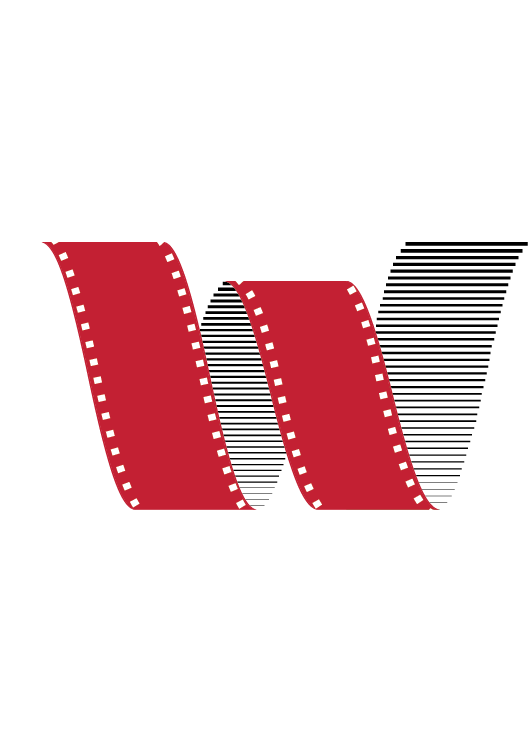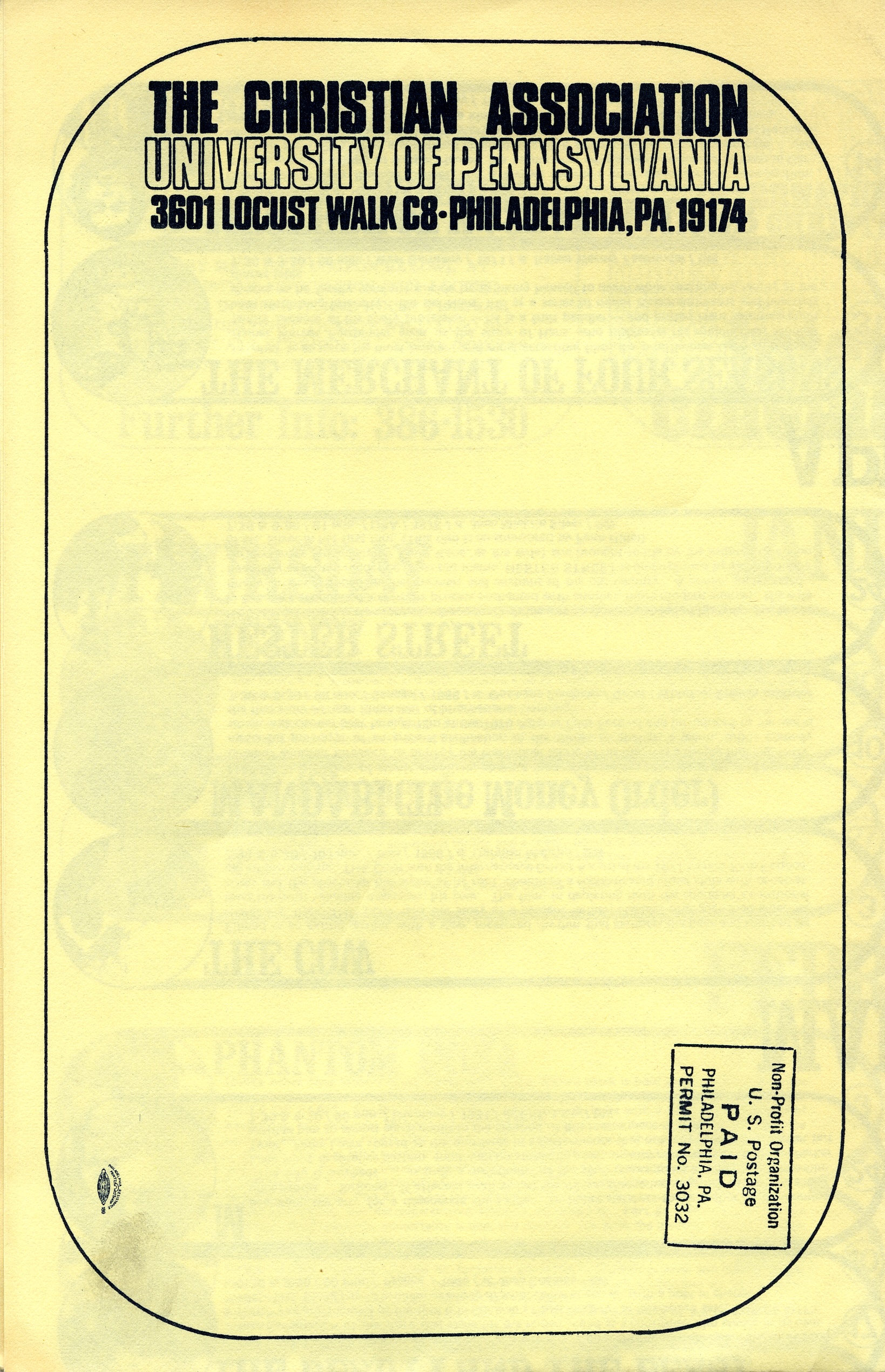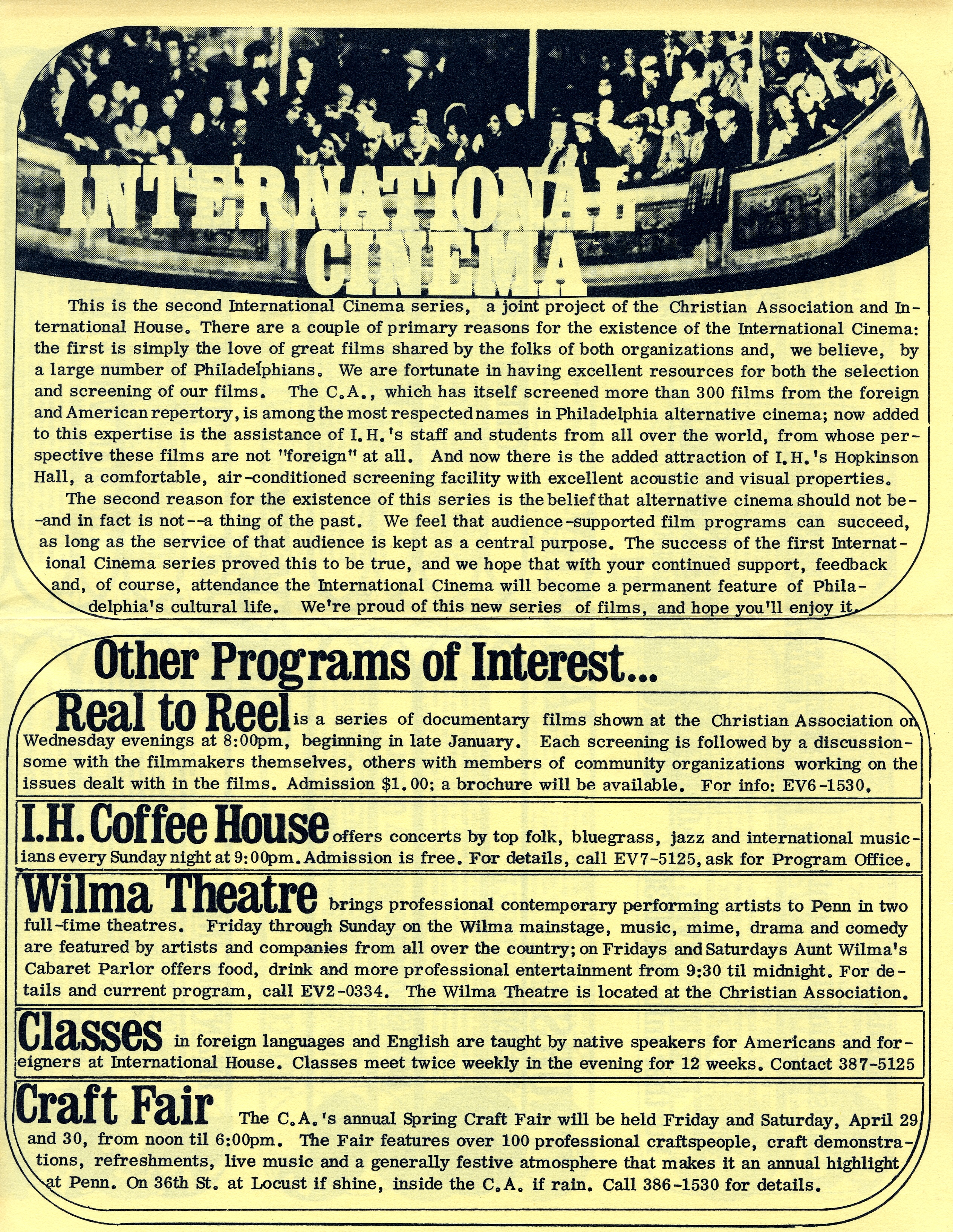Tanya Goldman
The Wisconsin Center for Film and Theater Research (WCFTR) is one of many institutions that house materials related to the great cineaste Amos Vogel (1921-2012). A man of capacious tastes and eager to promote appreciation for “artistically satisfying films,” Vogel brought an eclectic range of nonfiction, foreign, experimental, and independent films to audiences in New York through his fabled postwar film society Cinema 16 (1947-63). At its height, Cinema 16 boasted a membership of 7,000! Through Cinema 16, and his work with the New York Film Festival in the 1960s, Vogel is credited with building the reputations of many now- canonical filmmakers. In 1973, Vogel joined the University of Pennsylvania as professor of communication; the following year saw the release of his classic book Film as a Subversive Art (1974). He would remain at UPenn until his retirement in 1991.

Vogel’s contributions to film history are legion and his storied career has received a good deal of attention. I was lucky to attend several screenings in New York City in 2021 staged to commemorate the centennial of his birth (I even picked up a snazzy t-shirt [right]!) Exploring the Austrian Film Museum’s online materials about Vogel is a must and I particularly enjoy Richard Brody’s 2015 piece in The New Yorker.
We are lucky that Vogel leaves behind a considerable amount of paper materials and films diligently cataloged by archivists at WCFTR, Austrian Film Museum, Columbia University, and the Harvard Film Archive. I would also be remiss if I did not mention the availability of archival documents and writings lovingly curated by Paul Cronin and Scott MacDonald. In my own research on 16mm distribution and exhibition, I’m nowhere near this lucky! This has prompted creative problem solving: searching archival collections not explicitly about film, scouring Ebay for 16mm distribution catalogs and other ephemera, word-of-mouth, and the goodwill of folks willing to lend me personal materials (h/t to the late Tom Luddy and Dennis Doros and Amy Heller of Milestone Films! Psst: Milestone also recently deposited their materials with WCFTR!) My point being: While Vogel’s papers at WCFTR are of obvious interest to Vogelites far and wide, I’d like to highlight how they might be used as points of departure for innumerable other research projects. In what follows I offer one such case in point: how materials in Vogel’s papers can lend insights into postwar U.S. campus film societies, an area of film history – if you’ll indulge me – that demands much further study! Who’s ready to join me?
First, let me set the stage. America’s earliest film societies date to the early 1930s, taking inspiration from Parisian salons and London’s Film Society founded in 1925 by future MoMA curator Iris Barry. Two short-lived societies in New York City in the first half of the 1930s — Film Forum and Film Society – are among the earliest documented iterations in the U.S. In 1935, the Museum of Modern Art began distributing film prints which sprouted tentative growth. But it was not until after World War II – driven in large part by the growing adoption of 16mm projectors – that film societies and film’s use in educational contexts really took off. Cinema 16mm emerged in 1947 in parallel to broader efforts in the U.S. to build a nationwide network of local organizations to promote the use of film for adult education under the banner of the Film Council of America. While this organization petered out by 1957, local film council movements lived on for decades. New York’s Film Council lives on to this day! In short, while the nature of postwar film clubs varied widely, they are an important antecedent to the academic study of film which would not cohere until the 1960s and ‘70s. (I highly recommend the book CinemaTexas Notes about film studies and student-written program notes at the University of Texas-Austin!)
Campus film societies also seem to have tentatively taken root by the 1950s; their popularity would explode in the 1960s and ‘70s supported by government investments in education that trinkled down to student programming budgets, as well as the ever-expanding availability of content – foreign art films and Hollywood feature films past and present – on 16mm made available by nontheatrical distributors such as Audio-Brandon, Films Incorporated, and Swank Motion Pictures, among others.
That Dartmouth student film society materials made it to Vogel in New York and Philadelphia also suggest a broader network of exchange and sharing of ideas across an emerging generation of cinephiles.
Dartmouth College is believed to have one of the oldest continually operating groups, dating back to 1949. Incidentally, several booklets and flyers from Dartmouth are part of the Vogel papers at WCFTR. Examining these booklets offers a window into postwar film appreciation, the nature of what works were deemed ‘significant’ at various points in time, and the initiative students took to be their own programmers and showmen. That Dartmouth student film society materials – and others I will discuss below – made it to Vogel in New York and Philadelphia also suggest a broader network of exchange and sharing of ideas across an emerging generation of cinephiles. They are also simply pleasurable in their own right as vernacular objects. I personally adore this particular cover of a brochure from Winter 1978, presumably drawn by a Dartmouth student:
The Vogel papers also include ephemera from West Coast colleges. Through one such flyer we learn that UC Berkeley’s Film Society hosted a screening of Cuban filmmaker Tomás Gutiérrez Alea’s Memories of Underdevelopment (1968), paired with the joyous Cuban short For The First Time (1967), in the campus dining hall.

While I imagine similar screenings occurred elsewhere in the U.S., a student-led screening of post-Revolution Cuban films seems a natural fit at a campus known as the epicenter of the Free Speech Movement.
Materials kept by Vogel from UCLA earlier in the 1960s skew more towards French art films and amorphous concepts of U.S. classics. In 1961, UCLA hosted screenings of director Rene Clement’s Forbidden Games – billed as a ‘neglected classic’ – and Jean Renoir’s The Golden Coach. The following month brought a mixed program: Robert Wise’s noir The Set Up, a Laurel and Hardy Short, and Jerome Liebling’s documentary Pow Wow. (An eclecticism, I like to think, indebted to Vogel’s approach to curation!) In the summer of 1964, the UCLA community feasted their eyes on Theda Bara and other silent starlets in a “Vintage Vamps” series and were privy to a series of films dramatizing French history titled “Three Ages of France.”

A comprehensive history of campus film societies is yet to be written. Perhaps trying to write one is a fool’s errand.
While at the University of Pennsylvania, Vogel ran a Cinematheque at the university, importing his singular curatorial vision honed in New York to Philadelphia. Michael Chaiken has written wonderfully about this period in an essay in Be Sand, Not Oil: The Life and Work of Amos Vogel. Vogel’s papers at WCFTR reveal that his UPenn screenings at the Annenberg Cinematheque were not the only game in town! For several years, UPenn’s Christian Association, in partnership with local community center The International House, programmed more than 300 foreign and Hollywood repertory films. Though Vogel’s papers do not seem to have a list of the films screened in this context, it certainly invites comparative speculation when considered alongside Vogel’s “subversive” programming impulses.
A comprehensive history of campus film societies is yet to be written. Perhaps trying to write one is a fool’s errand. (Either way, this won’t stop me from trying in the years ahead!) I am nevertheless heartened that others – including Andrea Comiskey, Nick Pinkerton, and Frank Uhle – have also tentatively documented – in Comiskey’s words – “how Boomers caught the Cinephilia bug” through film exhibition conducted at other college and universities. Some who did would even go on to have significant careers in the film industry and academia. Overall, it is safe to say that through disparate activities occurring from coast-to-coast, students exercised the autonomy to envision, create, and participate in nontheatrical film cultures that they wanted to see. My hope is that this cursory analysis of materials housed within Vogel’s papers at WCFTR point to the much broader wealth of information awaiting discovery within this collection. I look forward to reflecting on this potential in future blog posts
Tanya Goldman is a Research Fellow at the Wisconsin Center for Film and Theater Research. She earned her Ph.D. in Cinema Studies in 2022 from New York University.
WCFTR has recently processed the Amos Vogel papers as part of the project “Expanding Film Culture’s Field of Vision: Processing and Sharing the Collections of Amos Vogel, Jump Cut, Angles, and the Wisconsin Film Festival,” funded by a grant from the National Historical Publications and Records Commission.




